Figuring out what type of light carnivorous plants need to grow well indoors can be a daunting task. This is partially due to the needs of the plant, the configuration of the growing space, and the number of lighting options available. It’s also largely due to the fact that light itself can be complicated to measure.
To help simplify things, we’re going to break this topic down into several parts:
- Part 1 – What type of light do carnivorous plants need? (keep reading)
- Part 2 – How much light do carnivorous plants need?
- Part 3 – Which grow lights are best?
Light color (quality)
Light is made up of many colors. These colors are produced by different wavelengths of energy. The size of the wavelengths is measured in nanometers (nm). Plants use the area on the light spectrum between 400 and 700 nm to conduct photosynthesis. This is known as the Photosynthetically Active Radiation (PAR) region.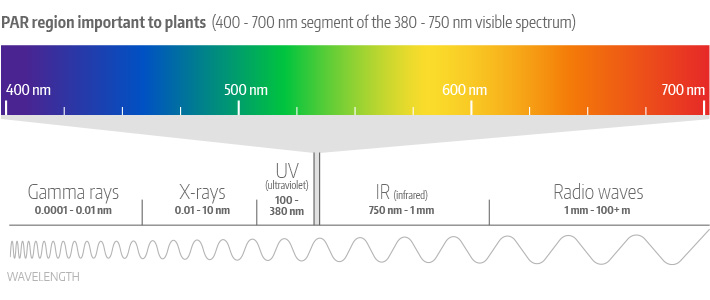
Photosynthetically Active Radiation (PAR) – The area on the light spectrum between 400 and 700 nm that plants can use to conduct photosynthesis.
Plants use different PAR regions for a variety of processes:
Violet, Blue ( 400-520 nm) – Important for leafy growth and conducting photosynthesis.
Green, Yellow, Orange (520-600 nm) – Used by carotenoids and other pigments to conduct a variety of processes including energy transfer for photosynthesis and protection from over-exposure.
Red (600-700 nm ) – Necessary for photosynthesis and promoting fruit and flower production.
The amount of light needed in each color range may differ from one species to the next and depends on what stage of growth a plant is in. However, it can be said that overall plants need light in all colors of the spectrum, not just narrow peaks in the blue and red ends as is commonly assumed. For a more in depth look at why this is the case, check out this study by Dr. Keith McCree or read Inda-Gro’s summary of his findings.
What about Ultraviolet (UV) and Infrared (IR) light outside the PAR range?
While plants don’t use UV and IR light to conduct photosynthesis, these segments of the spectrum can still provide several benefits to plant growth. Benefits can include disease resistance, reduction of bacteria and fungus, and more robust growth.
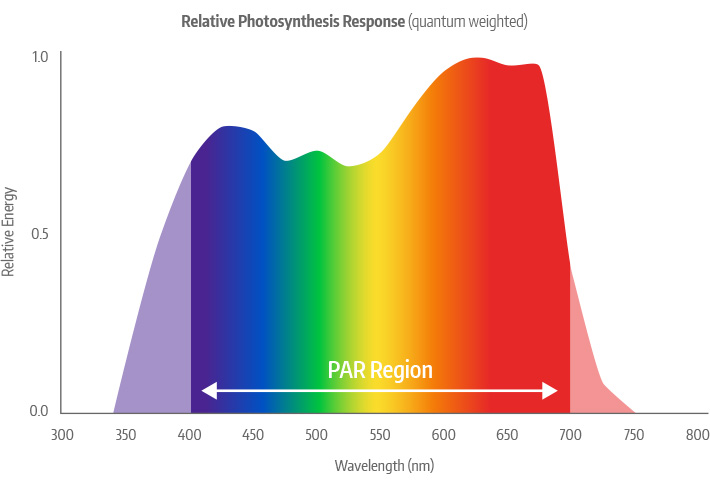
Quantum weighted Relative Action Curve adapted from McCree, 1972.
So what should I look for when researching grow lights?
A Spectral Distribution Curve (SDC) is important to look for when researching grow lights. It provides a visual weighting of the PAR wavelengths produced by a particular bulb. The SDC of a bulb is measured using a spectroradiometer.
There are two things to keep in mind when reading an SDC:
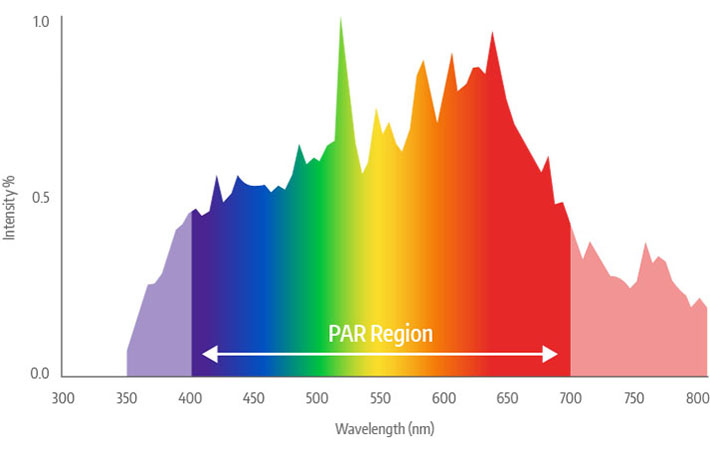
Fig. A – Broad spectrum of the Protopia 315W 4K CMH bulb
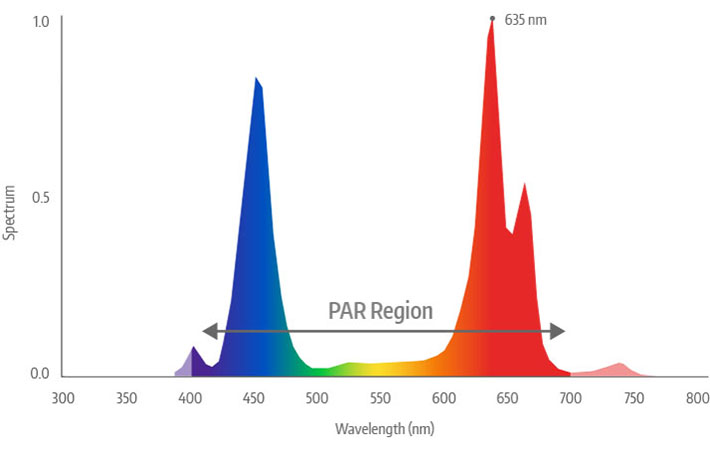
Fig. B – Narrow spectrum of the Growstar 45W LED
What about Kelvin and CRI?
A good grow light doesn’t (or shouldn’t) provide light quality measurements in Kelvin or CRI. Why? Humans process green and yellow light better than blue and red light. Kelvin and CRI scales take this human perception into consideration by assigning higher value to green and yellow light. This may result in light that looks good to us, but since plants need all colors of light, CRI ratings don’t tell us much about whether it will “look good” to the plants. Kelvin and CRI do have their place in helping us figure out color though and are often included in light specifications so we’ll cover them briefly.
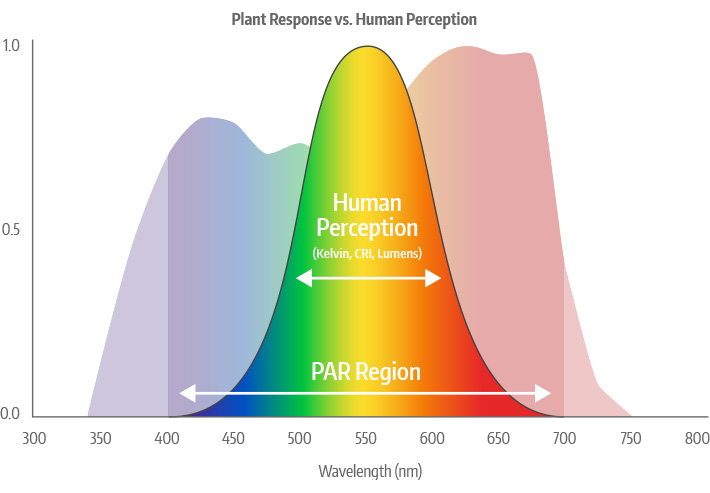
Kelvin (K) – With respect to light, Kelvin refers to the overall color of light a bulb produces based on human perception. Colors typically range between 2700K (warm orange) to 6500K (cool blue/white). While Kelvin tells us little about the color wavelengths a light emits, it can be used to ballpark what end of spectrum is favored. Warm lights will lean towards the red end of the spectrum and cool lights will lean towards the blue end.
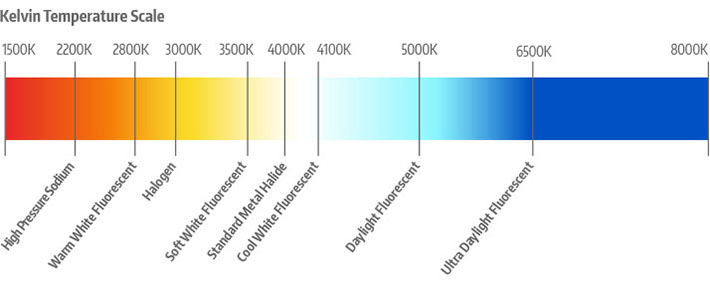
Color Rendering Index (CRI) – A CRI rating tells us how accurately a light can display colors compared to sunlight. The sun has a CRI of 100. A CRI of at least 85 is good if the aim is to have plants appear naturally colored. A high CRI can indicate a wide range of colors are emitted across the PAR region, but not necessarily since it is weighted for human perception. The only way to know for sure would be to find the SDC of the light.
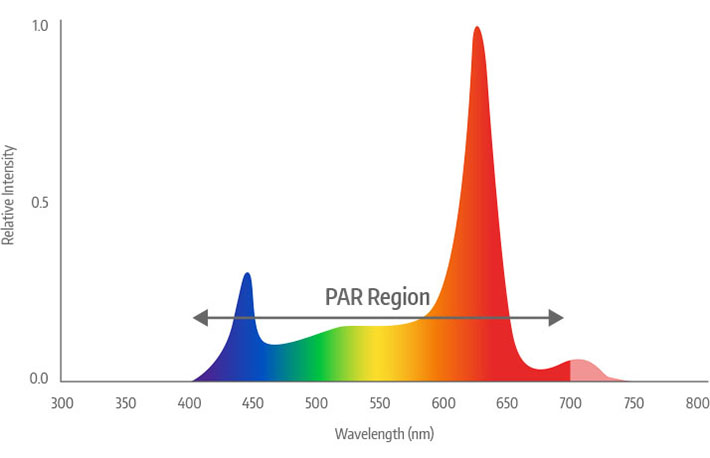
SDC for the KingLED 1200W (original model) – Giving plants a purplish hue, this light would measure poorly on the CRI scale and yet provides a decent spectrum of light for plants.
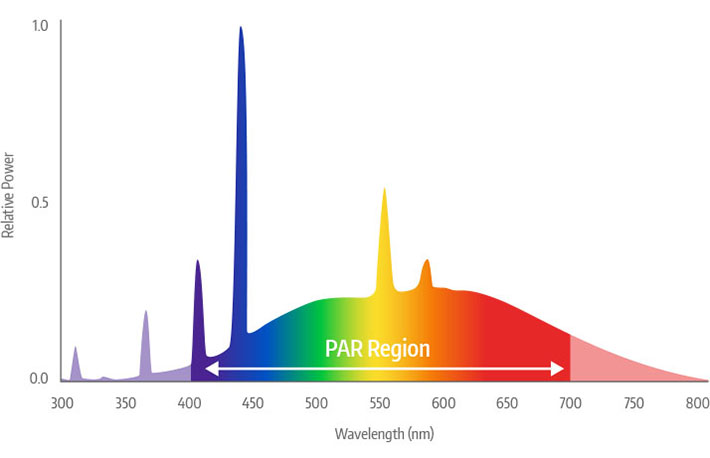
SDC for the Sylvania Octron 950 Full Spectrum T8 – With a CRI of 90, this light looks good to the human eye and would also make a decent grow light though it may need a little help in the blue and red ends of the spectrum.
If you’d like more information about Kelvin and CRI, see this video:
A note on LEDs labeled as PAR 20, PAR 30, etc.
You may notice some LEDs will have labels like “PAR 20” or “PAR 30”. This has nothing to do with the PAR region for plants. Instead, it stands for Parabolic Aluminized Reflector and is referring to the type of reflector the light uses along with the diameter of the bulb. Just a little note as this can cause some confusion.
Next steps
In this part we’ve covered what type of light carnivorous plants need including the colors of light necessary for healthy growth, the importance of SDCs when researching grow lights, and a little about Kelvin and CRI. Next, we’ll take a look at how much light carnivorous plants need in Part 2.

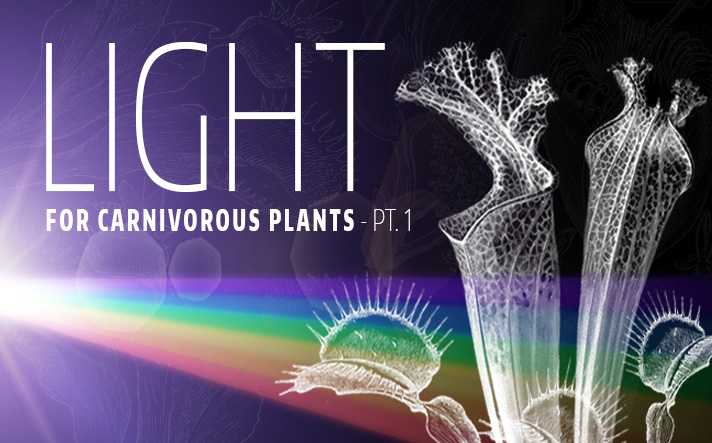
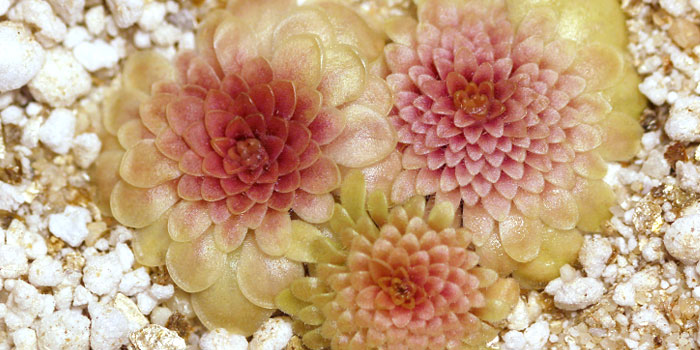
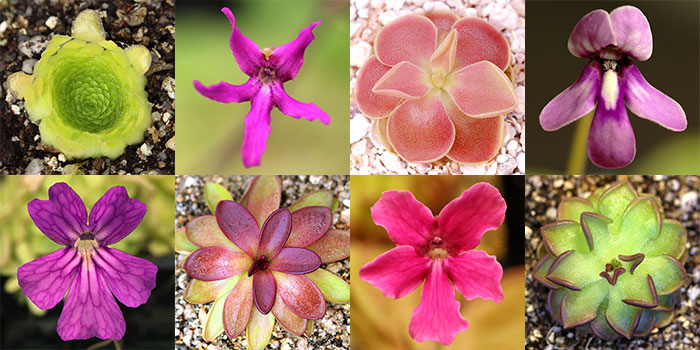
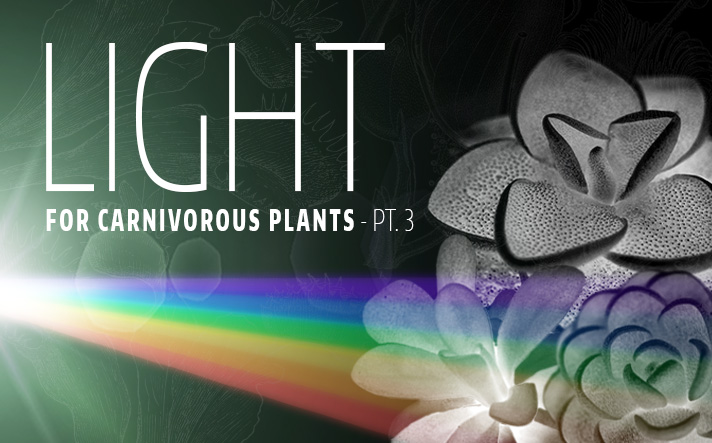
I am not sure if I missed it, but I still am unsure what was classified as the best light. I see that all spectrum is needed but I am unsure if the Red Blue LED lights I have are good for my sundews/nepenthes/bladderworts or if I need to get a White LED light
Hi Philip,
If you are using a red/blue LED as your only light source, it is likely you will need a white LED or other full spectrum source in addition or instead. It would be best to check the specs for your current light and see if any information is provided on the spectral range it covers. You can also check out Part 3 of this series for some good examples of lights (including LEDs) with wide spectral ranges: https://curiousplant.com/best-grow-lights-part-3/. I hope this helps and thank you for getting in touch!
Thank you,
Elizabeth